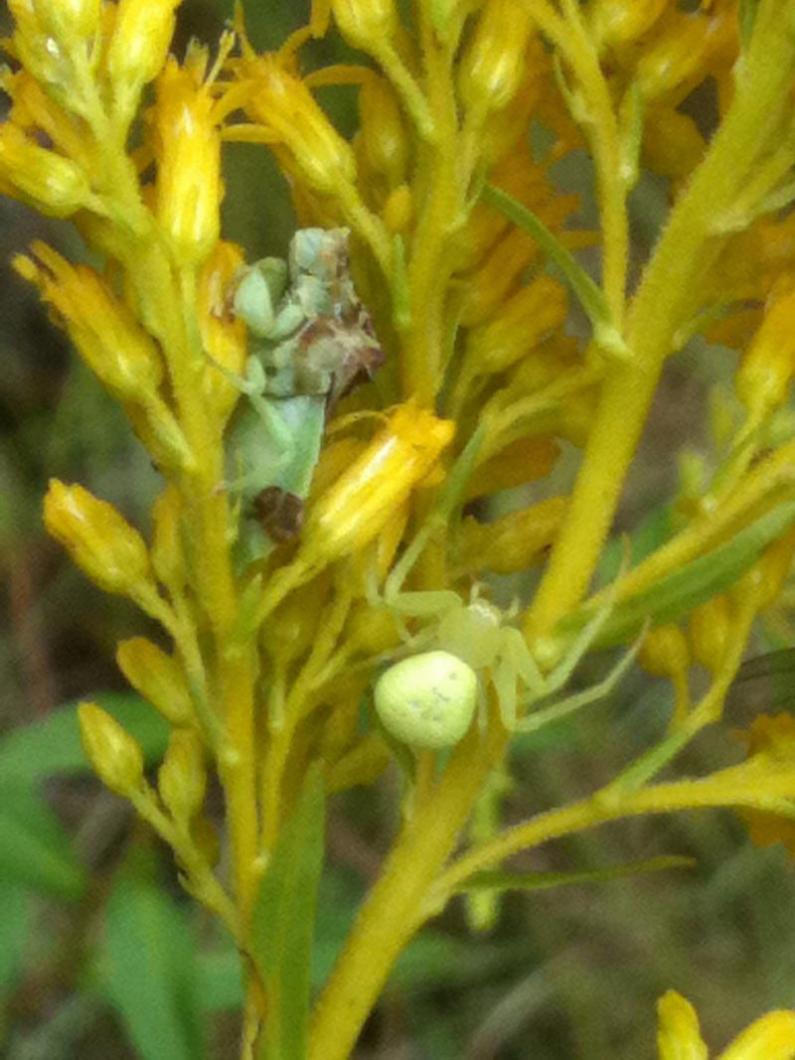“Patience is the greatest of all virtues.”
Though Cato the Elder figured this out around 200 BC, it is likely that crab spiders could have told him even earlier. They know that good things come to those who wait.
Crab spiders, members of the Thomisidae family of spiders, embody that adage. Their waiting game can last weeks, at the end of which a sweet snack will be the reward. All that time, they are perched on a flower, leaf or plant part, standing sentinel and waiting. Always waiting . . .
As ambush predators, crab spiders will not actively hunt or go after prey. Nor can they catch a meal in a web, because web-making is not in their skill set. In fact, crab spiders can only spin silk to use as a drag line to evade predators or to move to another perch. Though they are mostly motionless when laying in wait, there is more to finding them than meets the eye!
Crab spiders are also known as flower crab spiders because of their fondness for flowers. A common crab spider passing the time around these parts is the goldenrod spider. Don’t be surprised if it takes some time to see one sitting on a goldenrod bloom. They are masters of camouflage.
A chameleon-like talent of theirs is the ability to change colors. Crab spiders can be white, yellow or green, but are able to adapt their color, even changing it completely, to blend in with their flower perch or other surroundings. Some crab spiders even mimic bird droppings!
Generally, the goldenrod spider is yellow with two red stripes on either side of its body. However, this spider contains a pigment sensitive to both white and yellow light, and this pigment allows the spider to turn either of those two colors. Turning from white to yellow takes about 20 days, while the reverse is quicker, being accomplished in about six days. Now that is a spider of a different color!
Their name comes from their resemblance to marine crabs. These spiders have wider, flatter bodies than most spiders, with two larger legs coming out from the sides of their bodies. The legs can catch their prey quickly, with help from their eight eyes, which can see close up, but not distances. They can also move forward, backward and sideways like their namesake.
Crab spiders make a favorite meal of unsuspecting bees, other spiders or wasps and butterflies that have come to a flower to drink its nectar. Crab spiders can inject venom, which will kill and liquefy the insides of these prey creatures, and then suck them dry.
While most of the literature insists that they aren’t damaging to humans, one interesting source does discuss their innocuousness, but continues on to say that “If one bites you, you will feel excruciating pain like a hammer blow on the nail. The cut grows to double its size, the nail turns black, the finger discolors and the pain shifts from the fingers to the hand. The symptoms only subside after a few hours.”
I prefer the earlier accounts that call them harmless.
Clearly crab spiders have many virtues beyond patience, but patience is the most notable. The Dutch apparently concur with Cato: a proverb of theirs says: “A handful of patience is worth more than a bushel of brains.” Lucky for those crab spiders.
Suzan Bellincampi is director of the Felix Neck Wildlife Sanctuary in Edgartown.





Comments
Comment policy »